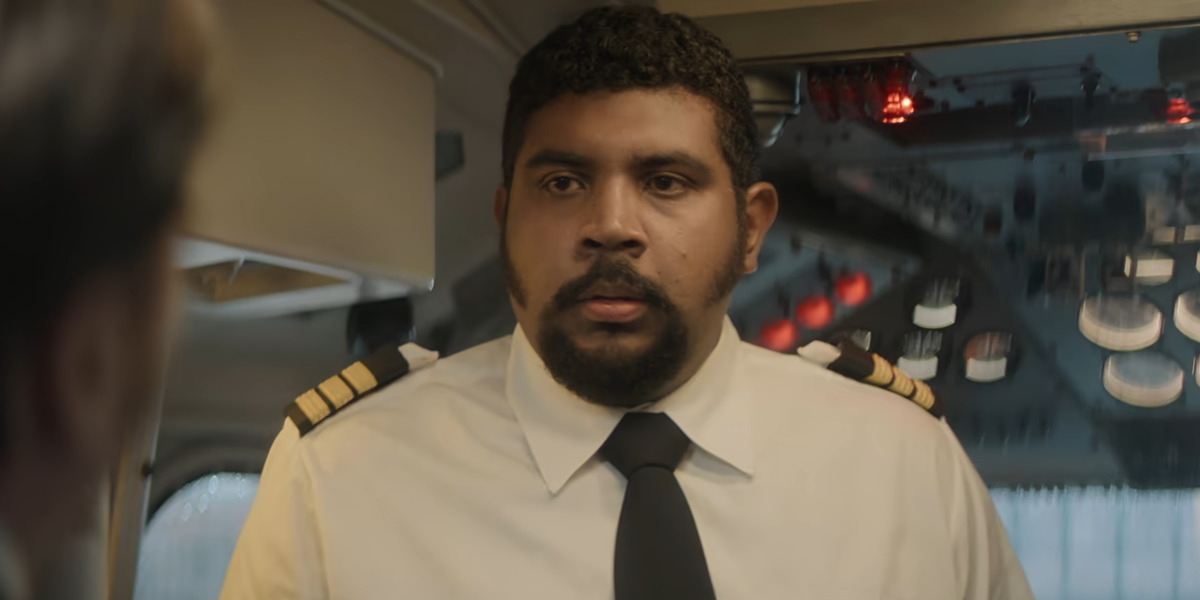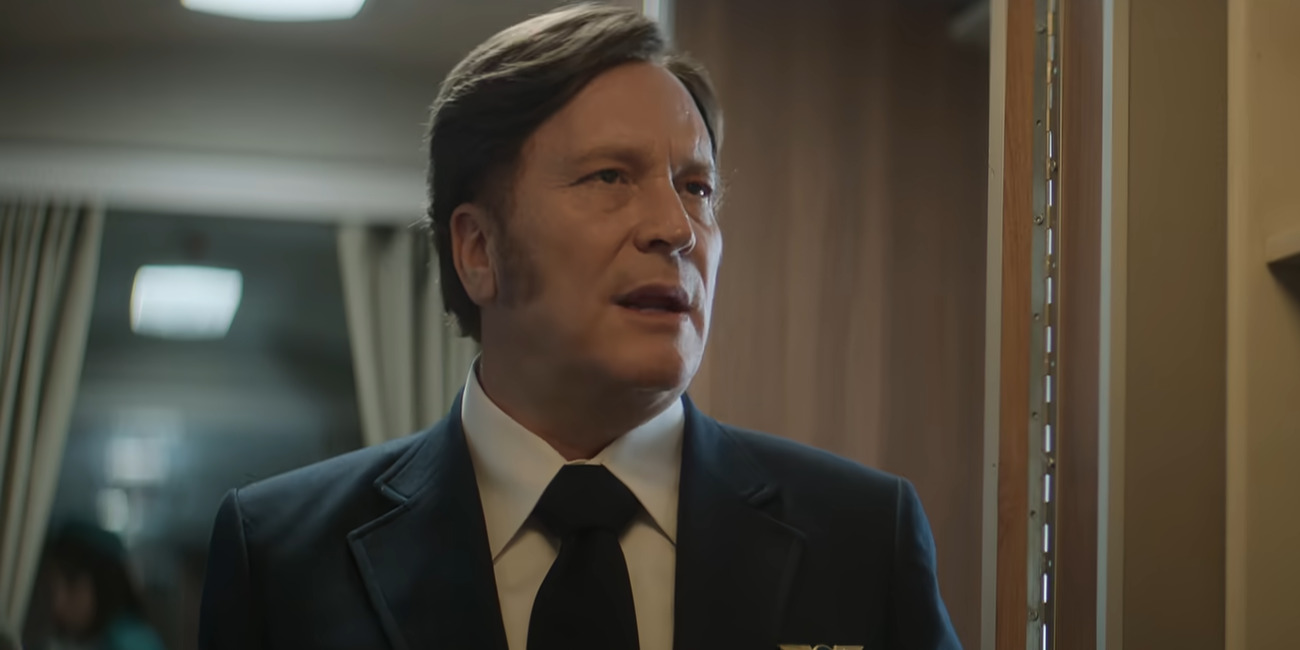‘The Hijacking of Flight 601,’ a Netflix Spanish show revolving around a gripping plane hijacking story, fictionalizes the real-life events that occurred aboard SAM Colombia Flight HK-1274 in 1973. In the show, the titular Flight 601 of the Aerobolivar Airline becomes the narrative center, as the plane charts its tumultuous journey after take-off from Bogotá, Colombia, wherein two armed men, Toro and Borja, take violent control over the aircraft. Consequently, the ship’s pilot, Commander Richard Wilches, and his co-pilot, Guillermo Luís Lequerica, find themselves playing by their aggressors’ rule while simultaneously attempting to brew an escape plan with stewardesses Edilma and Bárbara.
The show’s real-life basis remains noticeable through the numerous similarities between Flight HK-1274 and Flight 601. Nevertheless, at the same time, the latter’s consistent departure from historical accuracy through the fictionalization of certain truths also proves evident. For the same reason, it’s natural to wonder about characters like Richard Wilches and Guillermo Luís Lequerica and their connections to reality.
Richard Wilches and Guillermo Luís Lequerica: A Fictionalized Combination of Flight HK-1274’s Real Pilots
Within the true-story-inspired narrative of ‘The Hijacking of Flight 601,’ Commander Richard Wilches, the aircraft’s captain, and his co-pilot, Guillermo Luís Lequerica, are on-screen counterparts of the real-life individuals who piloted Flight HK-1274. In reality, two pairs of pilots helmed Flight HK-1274’s control during the 30+ hours the vessel was under hijack. Captain Jorge Lucena and co-pilot Pedro Gracia boarded the plane prepared for a domestic flight on May 30, 1973— a Wednesday. However, about twelve minutes into the flight, the pilots realized their journey wasn’t a regular trip when two hooded individuals revealed their weapons and took control of the aircraft.

Lucena had been in a similar situation in the past— four years ago— when a different flight presented the threat of a hijacker with a knife who wanted the pilot to steer the ship to Cuba. Back then, Lucena was able to deal with the hijacker, even throwing a punch his way. Nevertheless, the circumstances presented a different reality this time around, given the two armed men and 84 passengers under the Captain’s care. For the same reason, the Captain attempted to comply with his assailants— later identified to be Eusebio Borja and Francisco Solano López.
However, Borja and López didn’t want Lucena to fly them to Cuba— a common occurrence during the 1970s. Instead, these men claimed to be members of the National Liberation Army with demands of release for political prisoners and two hundred thousand dollars. Thus, due to such a mountainous ransom, the government’s refusal to negotiate with terrorists, and SAM airline’s taut negotiations with hijackers, Flight HK-1274 saw a long and arduous journey hopping from one airport to the other.
Eventually, 32 hours into the hijacking, such an extended flight under the same pilots became potentially dangerous. As such, Aruban authorities demanded to swap the current crew onboard with a replacement crew. The hijackers agreed to the deal, gaining fifty thousand dollars in exchange. Lucena’s replacement, Commander Hugo Molina, the new pilot, carried the cash in a briefcase onto the plane. Pedro Ramírez, the new co-pilot, accompanied Molina alongside his acquaintance flight attendant, Edilma Pérez, Maria Eugenia Gallo, and another crew member. Therefore, it was under Molina’s piloting that the hijackers’ reign of terror finally came to an end— if in a slightly unconventional manner.
By the early morning of June 1, a Friday, Borja and López were in possession of a significant amount of cash and were looking to end the hijacking. The same presented an early sign that their actions were never politically motivated from the start. Consequently, they made Molina fly the plane to Lima, followed by Mendoza, where they unloaded the remaining passengers. The rest were previously released or escaped earlier. With only the crew members left aboard, the hijackers prepared for their grand escape. They planned to take Gallo and Pérez as hostages to ensure their personal safety from authorities.
Nevertheless, after co-pilot Ramirez learned about the same— and the stewardesses’ resolve to comply for the safety of their co-workers— he decided to negotiate a different deal. In the end, Molina and Ramirez struck a “Gentlemen’s agreement” with the hijackers to keep their landing a secret from authorities until the flight’s arrival at Ezeiza. As a result, after dropping Borja and López, Captain Molina flew an un-hijacked Flight HK-1274 to Ezeiza, returning the crew members home to safety.
Thus, one can infer the points of reference from these accounts of Captains Lucena and Molina and co-pilots Gracia and Ramirez, which served as inspiration for Wilches and Lequerica’s storyline in the show. However, it also highlights the creative liberties that the show took— especially with Wilches, whose morals remain dubiously placed at times. Furthermore, it establishes the pure fictionality of the captain’s ending as depicted in the show. Ultimately, Wilches and Lequerica present a real-life inspired version of real pilots with ample artistic license applied.
Lucena, Molina, and Ramirez Passed Away
The aftermath of Flight HK-1274’s liberation from Borja and López’s command proved to be particularly thorny for Molina and his crew. Due to their agreement with the hijackers, the police almost considered the crew members, including Molina and Ramirez, to be accomplices. They even suspected them to have taken a cut from the fifty thousand dollars that the criminals ran away with. Furthermore, the media criticized Molina’s failure to update the authorities of Borja and López’s whereabouts during drop-off. In fact, the backlash got so bad the pilot’s father felt the need to defend his son publicly.

Although Borja and López slipped through the authorities’ fingers then, the police eventually identified the pair and even caught López. In the aftermath, Molina and Ramirez continued flying commercial aircraft. However, in 1983, the duo met an untimely death when their plane crashed into a factory near the Medellín airport following complications with the take-off. Jorge Lucena, the flight’s original pilot, also passed away in 2010. Yet, the pilot’s interview with Columbia circa 1973 helped the public understand the events through an authentic perspective. Lastly, although Gracia’s unharmed escape from the ordeal is public knowledge, nothing else is known about the co-pilot.
Read More: How Did Toro and Borja Escape? Where Are They Now?

